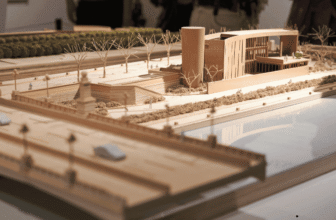
Berlin, Germany’s vibrant capital, is renowned for its dynamic blend of history, culture, and innovation. It’s no surprise that it has become a hotspot for international exhibitions and trade fairs. If you’re planning to set up an exhibition stand in Berlin, you’re in for an exciting opportunity to showcase your products or services to a global audience. However, successfully setting up an exhibition stand requires meticulous planning, strategic execution, and a touch of creativity. This guide will walk you through the essential steps to ensure your exhibition stand in Berlin is a resounding success.
1. Understanding the Venue
Berlin is home to several prominent exhibition venues, including Messe Berlin, Berlin ExpoCenter City, and STATION-Berlin. Each venue has its unique features, capacities, and logistical considerations.
Messe Berlin: One of the largest exhibition centers in Europe, it hosts major international trade fairs such as IFA (consumer electronics) and ITB (tourism). Its vast space and modern facilities make it ideal for large-scale events.
Berlin ExpoCenter City: Located adjacent to Messe Berlin, it offers additional exhibition halls and conference facilities, often used in conjunction with the main Messe Berlin complex.
STATION-Berlin: A historical venue with a more industrial and creative atmosphere, ideal for tech startups and innovative industries.
Before you begin designing your stand, familiarize yourself with the venue’s layout, facilities, and regulations. Understanding the flow of foot traffic and the location of key areas like entrances, restrooms, and food courts will help you choose the best spot for maximum visibility.
2. Setting Clear Objectives
Define your goals for the exhibition. Are you aiming to generate leads, increase brand awareness, launch a new product, or network with industry peers? Your objectives will shape every aspect of your stand, from design to staffing.
Lead Generation: Focus on creating an engaging space where visitors can interact with your products. Incorporate technology like touchscreens or virtual reality to capture their interest.
Brand Awareness: Emphasize your brand’s identity with bold visuals, consistent branding elements, and memorable experiences.
Product Launch: Ensure you have ample space for product demonstrations and incorporate a stage or presentation area.
Networking: Create a comfortable seating area where you can hold meetings and discussions.
3. Designing Your Stand
A visually appealing and functional stand is crucial to attract visitors. The following are important design components to think about:
Space Utilization: Maximize the use of your allotted space. Plan for product displays, storage, meeting areas, and open spaces where visitors can move freely.
Branding: Ensure your stand reflects your brand’s identity. Use your company’s colors, logos, and slogans consistently.
Visual Appeal: Eye-catching graphics, digital displays, and creative lighting can make your stand stand out.
Functionality: Consider the practical aspects, such as power outlets, Wi-Fi connectivity, and storage. Ensure your staff has everything they need to operate smoothly.
4. Preparing Your Materials
Prepare all the materials you will need well in advance. This includes:
Marketing Collateral: Brochures, business cards, product catalogs, and promotional items.
Digital Content: Videos, presentations, and interactive displays.
Product Samples: If applicable, ensure you have enough samples for demonstrations or giveaways.
Signage: Clear, professional signage to guide visitors and convey key messages.
5. Logistics and Shipping
Transporting your materials and stand components to Berlin requires careful planning. Consider the following:
Customs and Regulations: If you’re shipping from outside the EU, ensure you comply with all customs regulations. Hire a reliable customs broker if necessary.
Shipping Timelines: Allow ample time for shipping to avoid last-minute delays. Confirm delivery dates with your logistics provider.
Handling and Storage: Check if the venue offers storage facilities for your materials before and after the event. Ensure your items are properly labeled and packaged to avoid damage.
6. Setting Up Onsite
Arrive at the venue early to oversee the setup. Here’s a checklist to ensure a smooth setup process:
Site Inspection: Inspect your allocated space and confirm that it meets your requirements.
Unloading and Assembly: Coordinate with the venue’s staff for unloading and assembling your stand. Ensure you have the necessary tools and manpower.
Electrical and Technical Setup: Set up lighting, displays, and other electronic equipment. Test all connections to avoid technical issues during the event.
Final Touches: Arrange your products, marketing materials, and promotional items. Ensure everything is in place and looks professional.
7. Staff Training
Your staff is the face of your company at the exhibition. Ensure they are well-prepared to engage with visitors:
Product Knowledge: They should be well-versed in your products or services and able to answer any questions confidently.
Sales Skills: Train them in effective sales techniques and how to qualify leads.
Customer Service: Emphasize the importance of a friendly and approachable demeanor.
Demo Skills: If you’re showcasing a product, ensure they can demonstrate it effectively and highlight its key features.
8. Marketing and Promotion
Promote your participation in the exhibition well in advance to attract visitors to your stand:
Social media: To generate buzz, use your social media accounts. Share sneak peeks, booth numbers, and special offers.
Email Campaigns: Send out email invitations to your existing contacts and potential leads.
Press Releases: Send out press releases to regional and industry periodicals.
Collaborations: Partner with other exhibitors or sponsors to cross-promote and increase your reach.
9. Engaging Visitors
Once the exhibition begins, focus on attracting and engaging visitors:
Interactive Elements: Incorporate interactive elements such as touchscreens, virtual reality experiences, or live demonstrations.
Promotional Activities: Host contests, giveaways, or product demonstrations to draw in crowds.
Hospitality: Offer refreshments or small gifts to make visitors feel welcome and encourage them to stay longer.
Networking: Use the opportunity to network with other exhibitors and industry professionals.
10. Post-Exhibition Follow-Up
The work doesn’t end when the exhibition does. Track leads and assess your effectiveness:
Lead Management: Organize the leads you’ve collected and prioritize follow-ups.
Feedback: Gather feedback from your staff and visitors to identify areas for improvement.
Performance Analysis: Assess your performance against your objectives. Analyze metrics such as the number of leads generated, sales made, and overall visitor engagement.
Thank You Notes: Send thank-you notes to visitors who showed interest in your products or services.
Conclusion
Setting up an exhibition stand in Berlin is a rewarding endeavor that can significantly boost your business’s visibility and growth. By partnering with a skilled exhibition stand builder in Berlin, you can leverage their local expertise to create a standout display. Understanding the venue, setting clear objectives, designing an attractive stand, preparing thoroughly, and engaging effectively with visitors are all crucial steps. With careful planning and execution, your exhibition stand in Berlin will not only stand out but also leave a lasting impression on the international stage.






